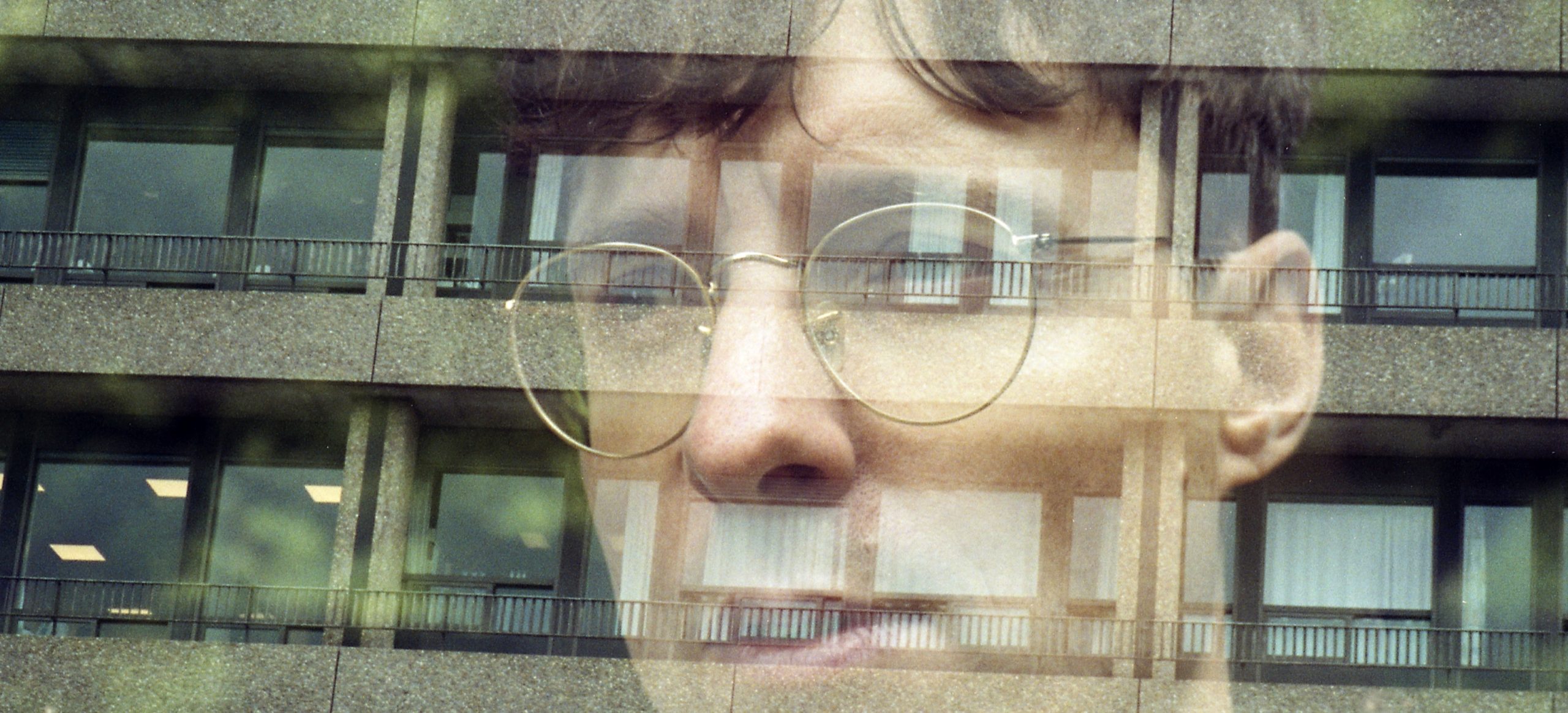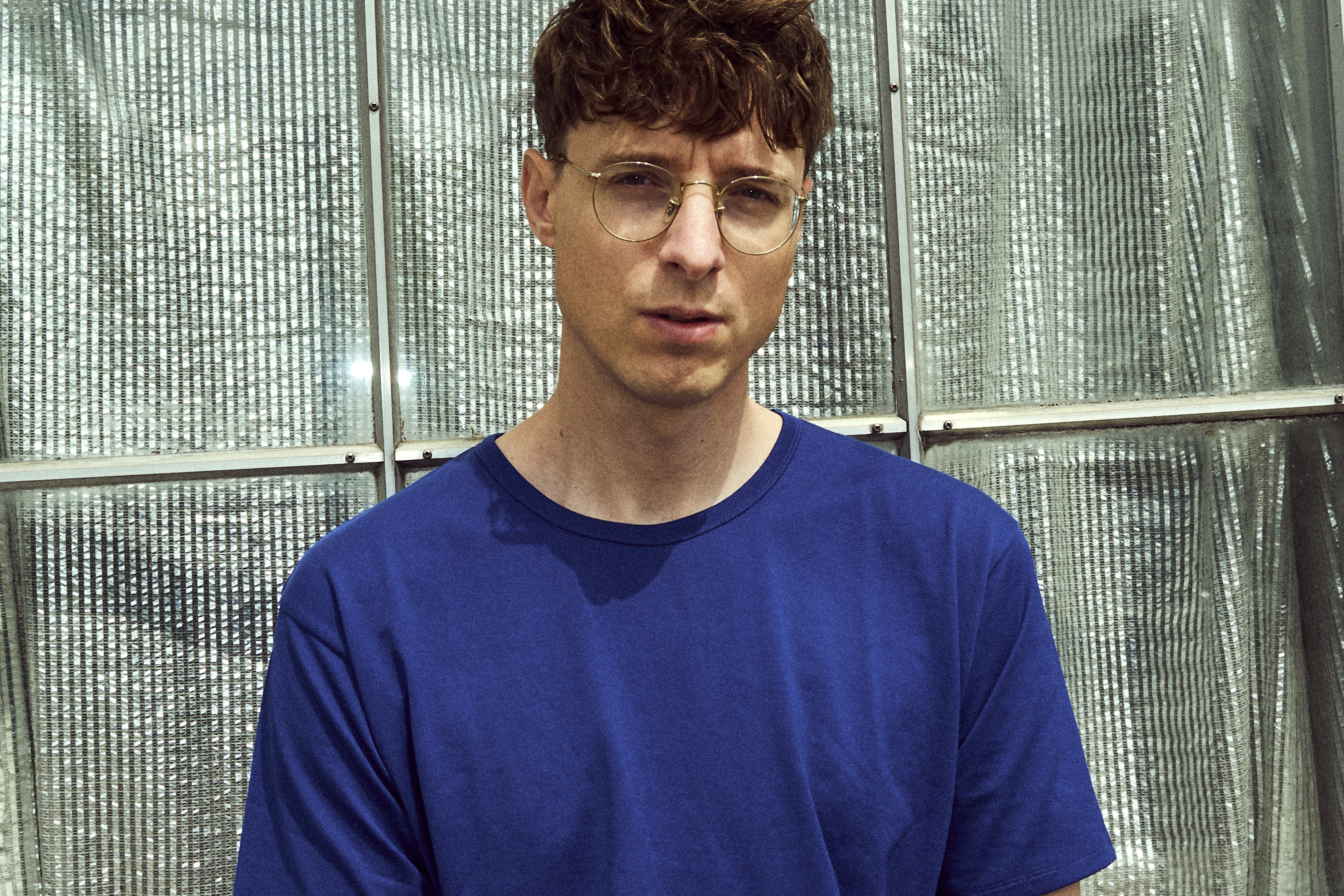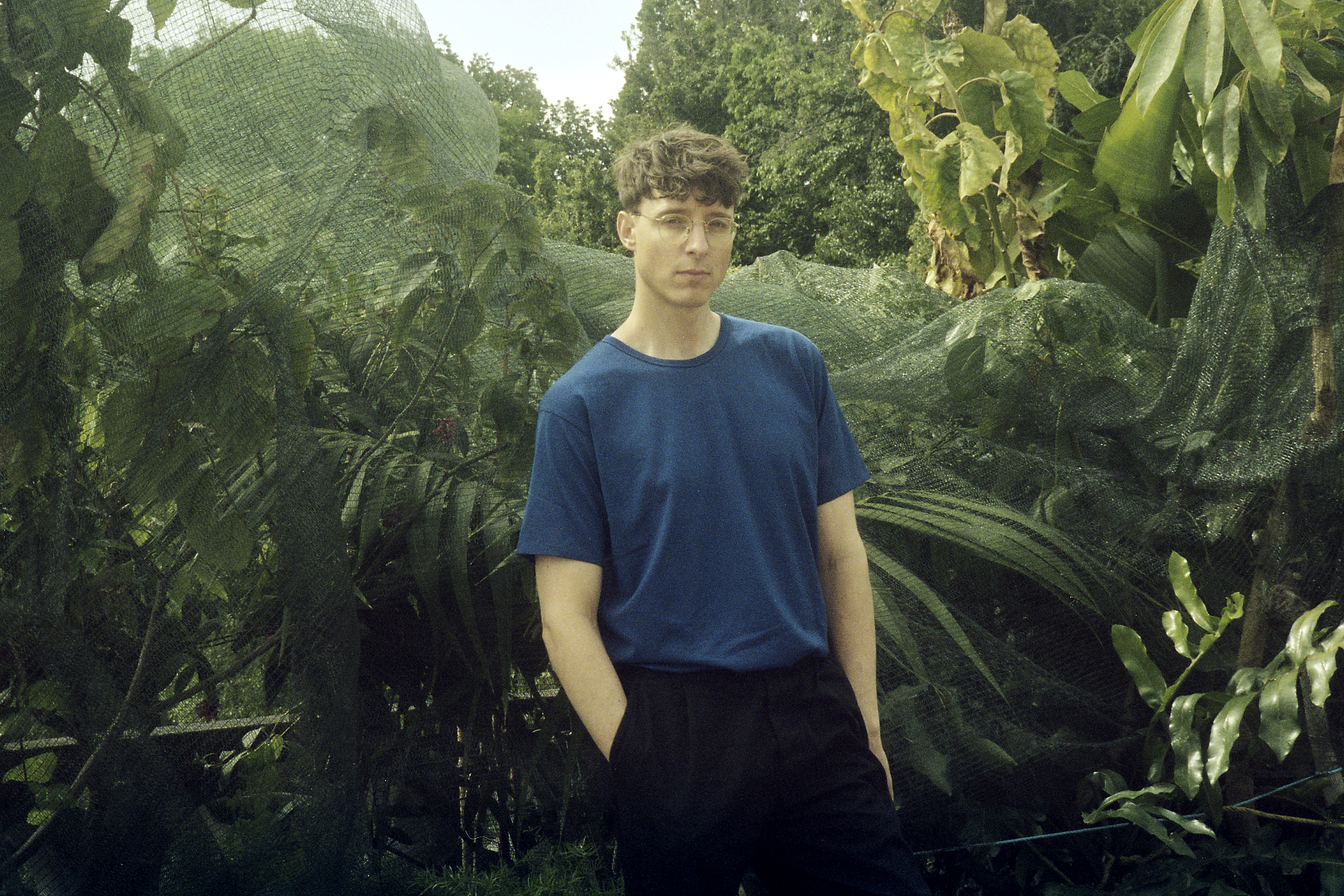Real Talk: Kasper Bjørke
The Danish producer reflects on the power of ambient music in healing anxiety and distress.

Real Talk: Kasper Bjørke
The Danish producer reflects on the power of ambient music in healing anxiety and distress.
Kasper Bjørke‘s latest album project is nothing like the Danish producer has shared before. Unlike his previous albums After Forever, Fool, Standing on Top of Utopia, and just about everything in his now extensive discography, The Fifty Eleven Project is an entirely ambient concept album, dreamy and dreamlike, darkly beautiful but ultimately empowering, intended as an interpretation of his emotional state during the five years of regular checkups following a shock cancer diagnosis in November 2011. He describes the project as a “therapeutic way of processing the diagnosis, the constant fear of relapse, and the light in being healed.”
As Bjørke recalls, much of the pain he suffered was psychological, stemming from the tests, consultations, and periods waiting for results. He developed severe anxiety and insomnia, to the extent that it was “far worse” than the actual cancer diagnosis and the operation. Ambient music became a tremendous source of calm, a way of quieting the voices in his head: “I found myself with a deep connection to instrumental compositions, much more than music from any other music genre, “he recalls. “As a matter of fact, music with vocals and beat driven tracks was actually causing me more stress.”
Eager to sonically document his experiences, and also with a view to providing material for others struggling similarly, Bjørke and his musician friends began writing The Fifty Eleven Project, named after “50 11,” the department that cared for him until October 16, 2016, the day he left hospital for the last time after five long years of regular CT scans, X-rays, and blood samples. “I wanted to document the gamut of feelings—both light and dark—using these long instrumental compositions as the narrative, and the track titles as a chronological guideline,” he explains. The album chronicles a journey from discovery of the tumour, to the operation and frequent examinations; from feeling a beacon of love and light in the birth of his son (in the same hospital), to finally leaving that waiting room for the last time.” He released it via Kompakt on October 19 to mark the second anniversary of getting the all-clear.
Intent on speaking more about his experiences and the healing power of music, a source of great reprieve during these difficult times, Bjørke penned the following essay.
Imagine calmly falling asleep in your bed and then, out of nowhere, it feels like an invisible force starts banging you on the head with a baseball bat, and white light flashes rapidly before your eyes, like a strobe, while your heart is pounding and the blood racing in your veins. It feels like you are having a heart attack and you are about to die. That is what it felt like for me having my first severe anxiety attack one night around three and a half years ago, in the comfort of my own bed, with my girlfriend sound asleep next to me.
After that, it came to a point where I needed to take prescription sleeping pills from my doctor to fall asleep. I was so afraid that I would get another attack and that created a vicious cycle of not being able to sleep without the pills, which made me start looking for other ways to calm myself down. I tried listening to meditation podcasts instead but, unfortunately, they didn’t really work for me. I would get annoyed with the narrator’s voice or the generic custom-made background music.
My only respite came in the shape of ambient music. If I listened to an ambient album that I knew already, set to “repeat” mode, I slept like a baby through the night. It felt like a revelation to let my ears and mind be swept into these soothing pads and melodies—and for the first time in a long time, I felt rested and calm.
The first album that helped me sleep was the Ambient 1 / Music For Airports by Brian Eno. Somehow those subtle compositions completely wiped away my anxiety and rewired my brain to focus just on the music and not think of any stressful thoughts. I felt like I was floating out of time, and completely calm and surrounded by a feeling of being safe and well, something that I had not felt in a long time. So, in the following period of time, the cure for my insomnia and nightly anxiety attacks was listening to carefully selected ambient music and focusing on my breathing. My remaining sleeping pills ended up in the trash can. The music became a refuge for my brain and, as it turned out, helped make my anxiety disappear completely over time.
Ambient as a music genre might resemble elevator muzak to some—and in its most generic, customized Spotify playlist form, it certainly is. But ambient also encomasses powerful, amazing compositions, especially when mixed with orchestral elements. Pioneers in their field, like Brian Eno, Ólafur Arnalds, Nils Frahm, Steve Reich, Max Richter, Johann Johannsson, Cliff Martinez, Bing & Ruth, Alva Noto, Alexandre Desplat, Wolfgang Voigt, Ryuichi Sakamoto etc. are all artists that have inspired me for many years.
I now found myself in a deep connection with instrumental ambient compositions, much more than music from any other music genre. As a matter of fact, music with vocals and beat-driven tracks was actually causing me more stress. In ambient music, often there is no tempo, no beat; which makes you lose the feeling of space and time. The repetitiveness of ambient music also gives it a meditative strength that is often reinforced, the longer the music is repeated. An example could be the simple piano line in the Johann Johannsson masterpiece “Flight From The City,” a composition that has touched me in ways that music rarely does.

Being diagnosed with cancer came as a huge shock. It came during some intense weeks of touring and preparing to play my first DJ gig ever at Fabric’s Room 1 in London, November 2011. The cancer was discovered by coincidence after a routine check-up at my doctor who sent me on to a ultrasound scan that revealed a tumour.
I didn’t feel sick at all—and that somehow made it even more scary. What if I had not gone to that check-up? The radiologist that performed the ultrasound was friendly and calm once he showed me the tumour on the screen and told me that he could not tell me what the tumor was. But I somehow knew it was cancer, even when I called my step sister, who is a doctor and who told me that it could be a cyst of some sort. And I could hear in her voice that she knew as well. The weeks after are somehow blurry. I tried to keep myself together—also for my girlfriend, who was obviously sad and scared. So I decided that I would just continue with my DJ gigs until the operation date and live my life as normally as possible. I booked an extra ticket for my girlfriend to go with me to London for my gig at Fabric but I don’t remember much, other than I felt like I was never really there and that I should have cancelled.
I was lucky in the sense that I avoided chemotherapy and radiation treatment. Because the tumour was in its early stage, a single operation was enough to remove the cancer. After the operation, I had to go through five years of frequent CT scanning blood tests, and X-Rays. There was almost no direct physical pain left a few months after the operation but I struggled a lot with the psychological effects of all those tests and doctors consultations, not to mention the periods in between, waiting for the test results. In that period, anxiety started to creep up on me. It’s not something that happened in one incident; rather, it slowly took over my mindset and made me feel restless and worried during the day. I would feel a pain in a muscle or it hurt when I coughed and that would make me think that it was the cancer that had spread to my brain, my stomach or lungs.
I could still function and work in my studio, answer emails, meet friends and be a good father to my son. It was at night when I had to sleep, when my mind and body finally was able to sleep, when my body finally was able to relax that I could no longer control my thoughts and then the anxiety became physical and I would have these attacks that made me develop insomnia. So, for me personally, anxiety turned out to be far worse than the actual cancer diagnosis and the operation. The fear of relapse was always in the back of my mind and I think that made me worry so much that my brain developed anxiety. In that same period, it became clear to me that I needed to process what I was going through creatively. I wanted to document my experiences and the idea for an album project started to take shape.

Since ambient was the music genre I was connecting with on a personal level, I decided to try to tell my own story about dealing with cancer and anxiety through long ambient, instrumental compositions. I also decided to involve a few musician friends, who master their classical instruments, in ways that I felt could help me interpret the emotional rollercoaster that I had been and still was going through, via the stories that I told them before and during the recording sessions.
Each composition on The Fifty Eleven Project is created to reflect on and interpret a certain feeling or location during those five years, from the tumour diagnosis to the CT scanner, the waiting room experience, the last day of getting the final results—but also the period after, contemplating on what I had been through, acceptance of my experiences with both cancer and anxiety—and moving past it. I decided to name each composition with titles that reflected those certain points of my progress as a sort of guided timeline. An example is “Paramount”, one of the last compositions on the album that tries to describe the feeling of light and hope. Because without hope, all is lost. This becomes very clear after you have been diagnosed with cancer. You start to think about what truly matters in your life, which is love and having someone close to you—and also your hopes for your own future and the future of your loved ones.
During and after the process of recording the album, I used some of the demos, which were still work in progress at the time, to fall asleep to myself. I was still battling anxiety, especially at night, and the demos made me contemplate and process my experiences in ways that therapy sessions weren’t able to. In that sense, it became very healing and therapeutic to record and listen to The Fifty Eleven Project album, which I named after the department at the hospital, where I was going for consultations and test results during those five years from 2011-2016.
By the time I finished producing The Fifty Eleven Project album, I felt a form of relief that I hadn’t even felt a year earlier, when I was walking out the hospital doors for the last time on October 16, 2016. Because the anxiety didn’t stop just because the tests were over and I had the final results. On the contrary, I realized that no one was looking after me anymore and now the cancer could potentially come back without being discovered. However, after the album was done, I had a real sense of being cured—and I haven’t had any anxiety relapses since. So it turned out that the year of working on the album and listening to the music over and over again had somehow relieved my anxiety. I find that remarkable and hopefully something that others can benefit from—both by listening to my album but certainly also other music that will make you feel comfortable and relaxed.

With more than 600 music therapists in the UK and Cancer Treatment Centres all across America providing music therapy sessions, it is a fact that music can help alleviate emotional, physical, and social stresses caused by cancer, or to boost your mood and help you through cancer treatment and recovery.
A study published by the Official Journal of the American Society for Radiation Oncology evaluates the impact of music therapy on anxiety in cancer patients undergoing simulation for radiation therapy. The trial measures a multilevel music therapy intervention using both live and pre-recorded music to treat state anxiety and distress, and strongly suggests that music treatment can significantly reduce both in this cohort.
39 patients received a consultation with a music therapist, during which music of the patients’ choice was played during simulation was selected. 39 other patients did not receive the music therapy consultation and did not hear pre-recorded music during simulation. The 39 patients who were exposed to music therapy reported significantly lower anxiety and distress during the procedure. The study concludes that incorporating culturally centered individualized music therapy may be an effective intervention to reduce stressors.
The researchers also suggest that further studies needs to be made, to learn more about the effects of music as therapy. I can only encourage this and find it remarkable that we as humans can be relieved of unwanted anxiety and stress, simply by listening to music.
It is quite a unique feeling for me, after having produced mainly extrovert club music with the purpose of making people dance for so many years, to start working within a different music genre that connects to other emotions that can make listeners relax and even fall asleep. People have told me after listening to the album that they have connected deeply to certain compositions, some have even started to cry in the process. I find that extremely rewarding; to know that people are making use of the music, reflecting on the compositions and putting them into perspective of their own lives. I am excited and hopeful for what the future holds when it comes to music as a healing power.
Read more about The Fifty Eleven Project here.
Photo: Dennis Morton

